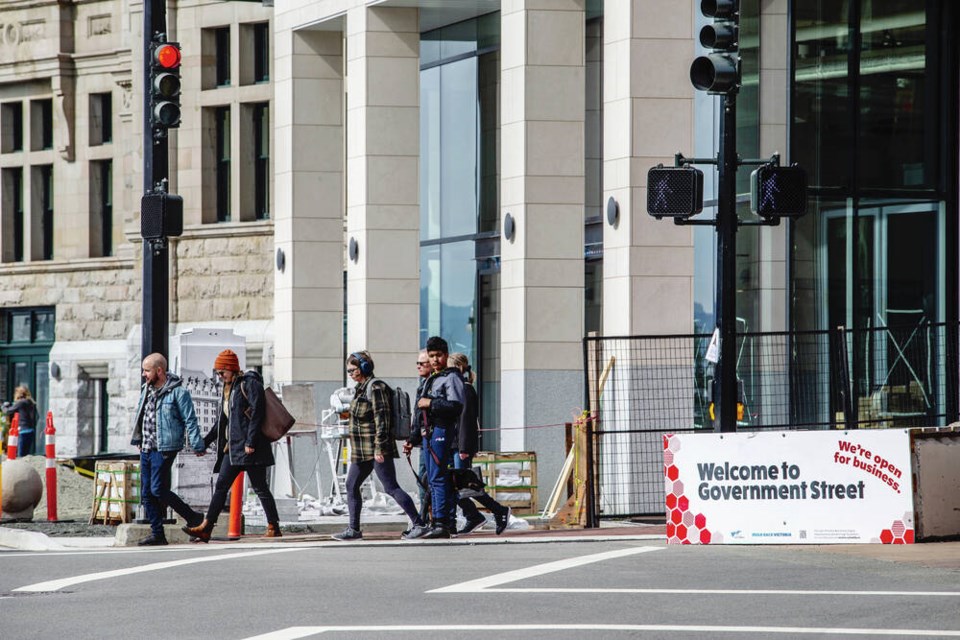As the City of Victoria runs its campaign to get a sense of what residents would like to see in future neighbourhood hubs to be built around the city, a recent public opinion survey reports relevant findings on how connected Canadians feel to the places and communities where they live.
The Angus Reid Institute poll of 4,000 Canadian adults found that half of the 18- to 35-year-olds who participated reported feeling they aren’t connected with the neighbourhoods where they live.
Just two in five Canadians ages 18 to 34 said they have a neighbour they could rely on to check on them if they were unwell, and just half said they could find someone to lend them $20 if they lost their wallet.
In contrast, about 70 per cent of Canadians age 54 and older reported feeling they belong in their neighbourhoods.
The results highlight the need for opportunities and spaces, like neighbourhood hubs, where neighbours can connect and engage.
Disconnection and isolation in cities has been on the rise for years. You might recall, for example, the Vancouver Foundation reported in 2017 that one-quarter of Metro Vancouver residents felt isolated and that participation in community life over the previous five years had declined sharply.
It also showed that young adults and other groups experienced greater barriers to participation. That report followed up on an earlier 2011 report.
Supporting those five-year-old findings, the Angus Reid survey found that 30 per cent of urban Canadians polled said they feel disconnected, while only 18 per cent of their rural counterparts said the same.
The public health restrictions of the last two years obviously contributed to the growing sense of isolation. Overall, 36 per cent of Canadians report they now interact with neighbours less than they used to. This group points squarely to the pandemic as the cause of this, with 78 per cent saying it’s their main reason for seeing and talking to people less often.
That’s hardly surprising. Considerable discussion has taken place about how the restrictions have increased isolation of many different groups — seniors, people with health issues or disabilities, young children and others.
We have also heard reports of the consequences of that increased isolation — including worsening mental health and increased substance abuse and domestic violence.
However, according to the survey, young people are also more likely to say they simply don’t want to talk to anyone.
Again, that shouldn’t be too surprising. These days, we have fewer pressing reasons than ever to change out of our three-day-old sweats, brush our hair, step out our doors and — eek! — talk with others face-to-face and in person. We can order groceries, dinner and entertainment online. We can work online from home. We can attend classes online.
The pandemic merely expedited the technologies and platforms that allow this remote connection and made their use mainstream.
Neighbourhood hubs could help fill some of that very human need to connect socially and in support of a common community goal. Hubs are meant to be vibrant public spaces that help build connections in the community and offer emergency resources.
In other cities with hubs, they help locals access services. Some focus on providing access to health services, education or social support and services.
Typically designed and run by the communities they serve, hubs are unique to each community and exist to serve and meet the needs of locals.
They’re not public squares, parks nor community centres — although they certainly can be those spaces, just as they can be a popular local post office, coffee shop or family-run grocery store.
If designed well, all those amenities can serve as gathering and connecting points within communities. They can all be places that people use, engage with and within, and where they go to be, to be seen and recognized, to meet — intentionally and incidentally — others, to interact and talk with each other, to socialize, to do business and to share information.
They can all be hubs to which a local community’s many social, business and physical pathways lead.
Two outdoor hubs already exist in Victoria — one in Fairfield near Cook Street Village and the other in Vic West near the Galloping Goose. A third indoor hub is located inside Crystal Garden, where non-profit community groups can book meeting rooms.
The city’s goal is to create a hub in every city neighbourhood.
To take the city’s survey, Victoria residents are asked to go to before April 20.



